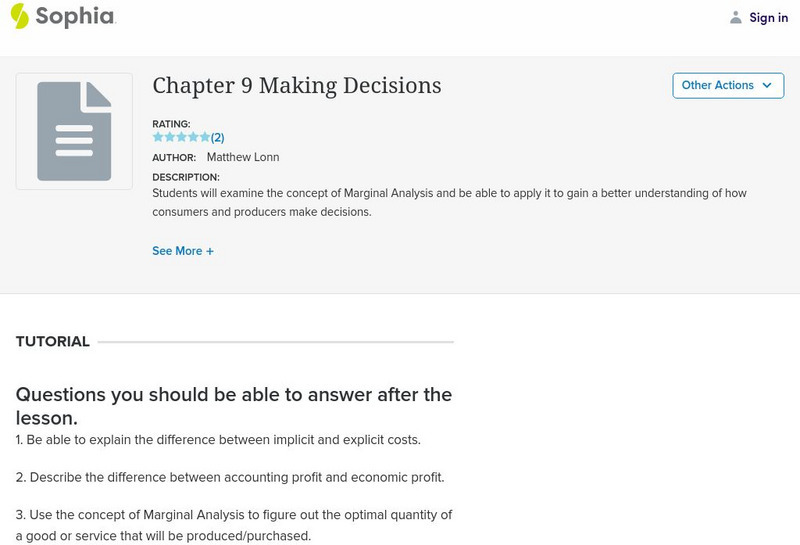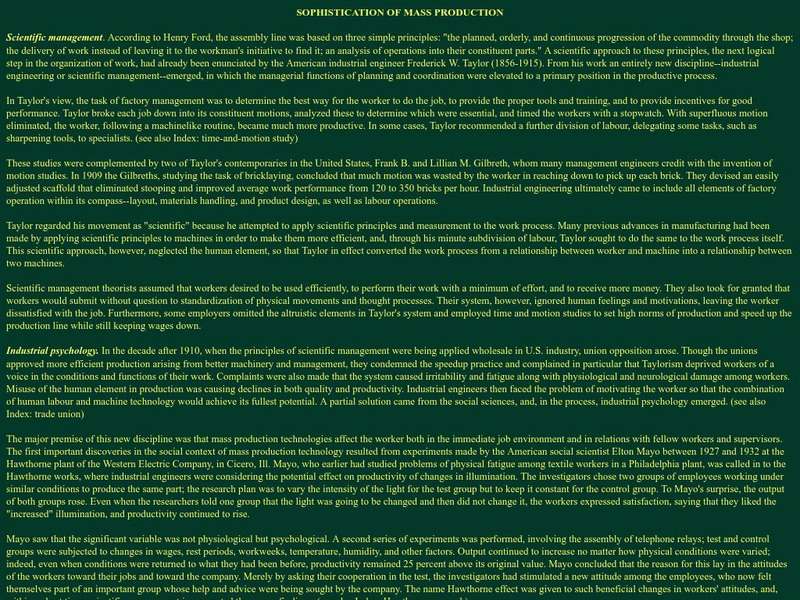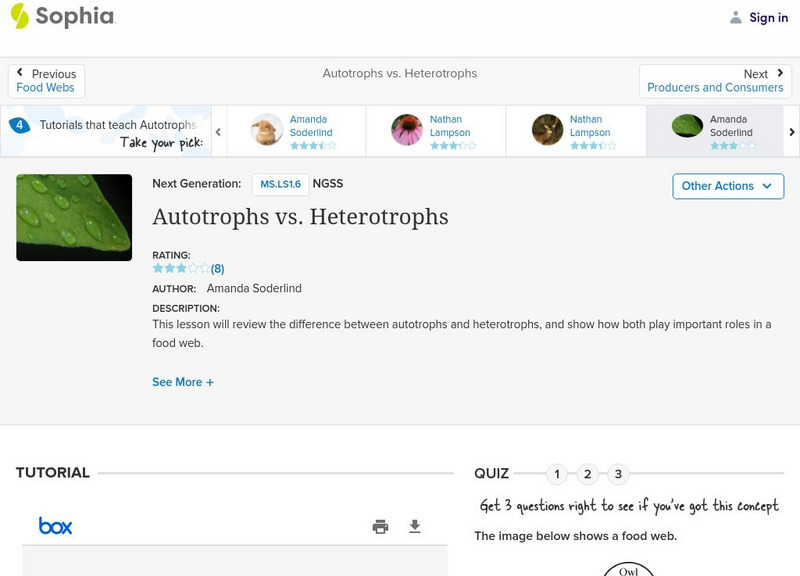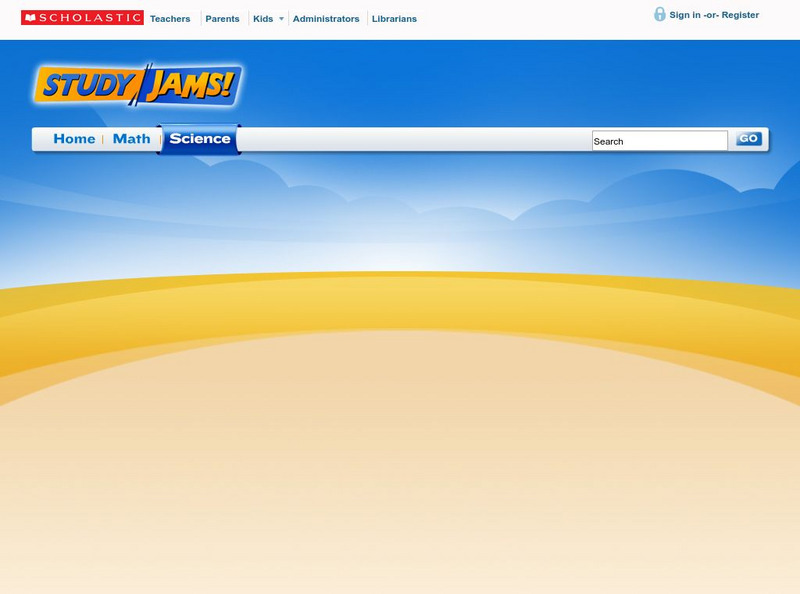Hi, what do you want to do?
Khan Academy
Khan Academy: The Effect of Government Interventions on Surplus
Practice what you have learned about the impact of price controls and quotas on consumer surplus, producer surplus, total surplus, and dead-weight loss in this four-question exercise.
Sophia Learning
Sophia: Making Decisions
Notes and a video clip provide students with an introduction to the idea of marginal analysis and of how consumers and producers make decisions.
University of North Carolina
University of North Carolina: Perfect Competition
This site shows cost curves for a firm in a perfectly competitive market, and has an interactive graph to show what their profit margin is at various levels of production.
Council for Economic Education
Econ Ed Link: Chevy Volt It's Electric!
The costs and benefits of owning an electric or hybrid car will be evaluated in this lesson. By reading and researching the history of the production of electric cars, the lesson allows students to understand how this market has developed.
Science Education Resource Center at Carleton College
Serc: Investigating Ecosystems:determining Feeding Relationships Among Organisms
In this lab, students will complete a field study about feeding relationships between organisms and present their findings in a food web as well as in a written narrative.
TED Talks
Ted: Ted Ed: Mc Donald's Cup Sizes Around the World
Ready to super size that soda? Buzzfeed produced this clever video comparing the various soda cup sizes from countries around the world. Which country has largest option to consume soda? [1:05]
Other
Management Control: Scientific Management
A look at the ideas of scientific management in mass producing products in the early 20th century. Includes ideas of Henry Ford, Frederick Taylor, and Elton Mayo.
Soft Schools
Soft Schools: Ecology Quiz
Take this interactive, multiple-choice quiz over concepts in ecology, then review your score and any missed questions at the end.
University of Groningen
American History: Outlines: Government's Role in the Economy
While consumers and producers obviously make most decisions that mold the economy, government activities have at least four powerful effects on the U.S. economy.
Scholastic
Scholastic: Study Jams! Science: Ecosystems: Food Chains
A video and a short multiple-choice quiz on food chains that explains how energy flows through the chain, beginning with plants.
University of Utah
University of Utah: Learning Center: learn.genetics: Great Salt Lake Food Web
Visualize how energy transfer takes place in two linked food chains, and how it demonstrates the interdependence organisms of the Great Salt Lake.
E-learning for Kids
E Learning for Kids: Science: South Africa: How Do Organisms Get Their Energy?
Join Ellen on her trip to the Kaap De Goede Hoop in South Africa, and learn more about plants, animals, and energy.
Science Education Resource Center at Carleton College
Serc: Food Chains: Nature's Restaurant
Students begin this lesson by making observations and recording evidence of the variety of living things in local nature site. Students use reference materials to research predators and food of the animals they observed, then illustrate...
New Zealand Ministry of Education
Nz Ministry of Education: Persuading Others
Identify the elements that make a successful TV advertisement. Identify the difference between verbal and visual features and say how they can be combined. Use the video camera to produce advertisements that show understanding of the...
Sophia Learning
Sophia: Autotrophs vs. Heterotrophs: Lesson 2
This lesson will review the difference between autotrophs and heterotrophs, and show how both play important roles in a food web. It is 2 of 4 in the series titled "Autotrophs vs. Heterotrophs."
Scholastic
Scholastic: Study Jams! Science: Ecosystems
A video and a short multiple-choice quiz on the topic of ecosystems, covering biotic and abiotic factors, and the roles organisms play in an ecosystem.



















